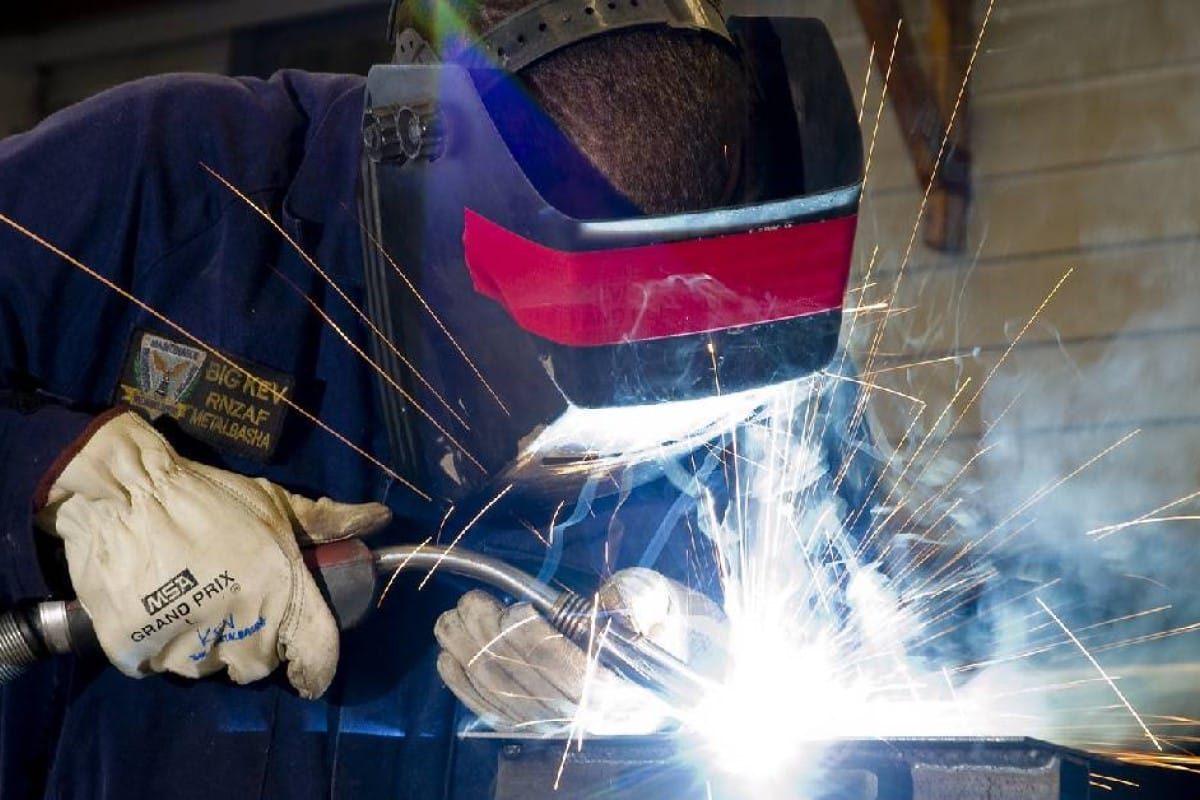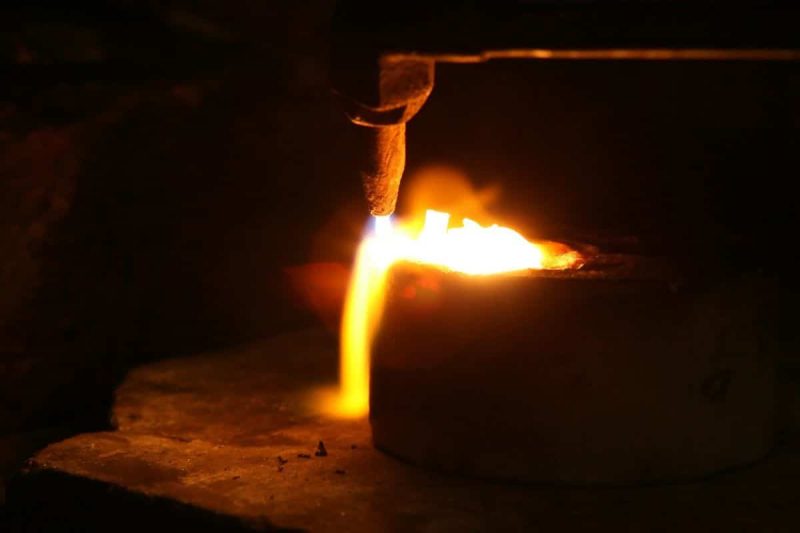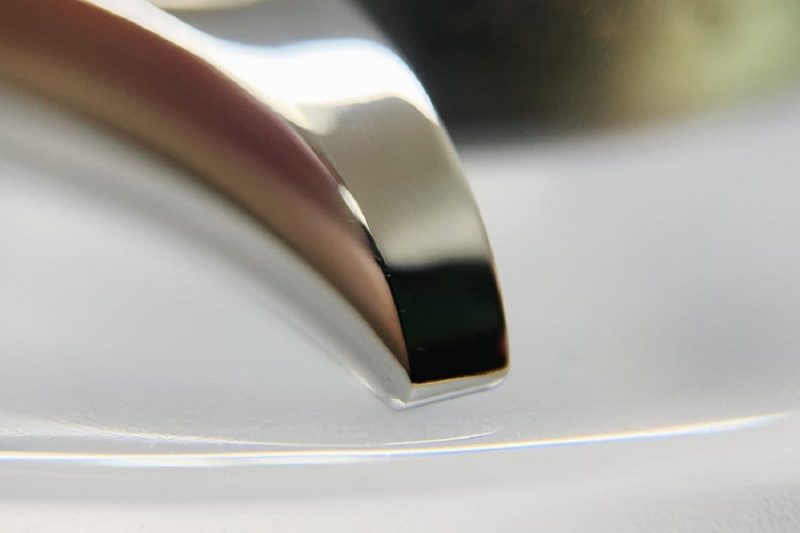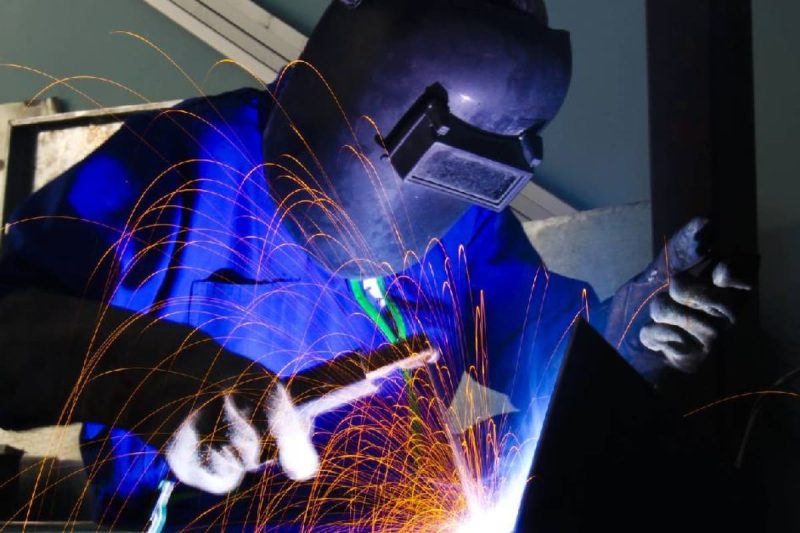
Welding Methods Comparison: Unveiling Optimal Performance
In modern industry, welding is a vital process used to join metal parts together. Different welding methods play a key role in various applications. In addition to welding materials, operator skills, weld length and size, and other factors that affect welding strength, welding method is also one of the factors that determine welding strength.
This article will compare several common welding methods, including laser welding, tungsten inert gas welding, metal inert gas welding, shielded metal arc welding, submerged arc welding, and resistance spot welding, to understand their working principles and discuss which welding method has The most outstanding performance.
Table Of Contents

What are the applications of welding?
Welding is a process in which the metal of two or more workpieces is heated and melted so that they form a strong connection after cooling. This connection can be permanent or removable, depending on the needs of the application. Welding can be applied in the following ways:
- Joining Materials: Welding is the primary method of joining metallic materials together. This type of connection can be used to create a variety of structures, from small components to large industrial components.
- Reinforcement and repair: Welding can be used to strengthen materials and repair damaged parts or structures. This is very important for maintenance and extending service life.
- Manufacturing: In manufacturing, welding is a critical step in assembling different components into a complete product. For example, cars, airplanes, building structures, etc. all require welding to connect various parts.
- Customization: Welding offers a flexible way to tailor products to specific needs. This is important for a variety of industries, including art, architecture, and personalized manufacturing.
- Energy Industry: In the energy industry, especially the oil and gas and nuclear energy sectors, welding is used to manufacture and maintain pipes, vessels, and equipment.
- Innovation and R&D: The research and development of new welding technologies also provide more advanced and efficient solutions for emerging fields, such as laser welding, electron beam welding, etc.

What are the different types of welding?
Different types of welding are suitable for different experience levels and applications. You can determine which type of welding is right for you by examining your welding experience and the materials you want to weld. We’ve put together some common types of welding, how they work, and their pros and cons:
Laser welding
Laser welding is a welding method in which a high-energy concentrated beam is used to melt metal. It is based on the characteristics of a laser and uses concentrated light energy to generate high temperature in the welding area, causing the workpiece surface to instantly melt. During the welding process, by controlling the movement of the laser beam or the movement of the workpiece, melting and solidification can be completed layer by layer on the weld to form a strong welded joint.
Advantages
- Precision: Laser welding is highly precise and can be welded in tiny areas, making it suitable for applications that require extremely high welding quality and appearance, such as electronic devices and medical equipment.
- Speed: Compared with traditional welding methods, laser welding is faster. The laser beam can move quickly, enabling high-efficiency production, and is suitable for large-scale, high-volume manufacturing.
- Small thermal impact: Since the welding area of laser welding is very small, the thermal impact in adjacent areas is relatively small, helping to reduce deformation and thermal damage.
- Automation: Laser welding is easy to integrate with automation systems to achieve highly automated production lines and improve production efficiency.
Disadvantages
- High equipment cost; the acquisition and maintenance costs of laser welding equipment are relatively high, which makes the investment cost of laser welding higher in some applications.
- Sensitive to material selection: Laser welding is more sensitive to material selection, and some materials may not be suitable for laser welding, limiting its application scope.
- High operating skill requirements: Laser welding requires highly trained operating skills to ensure the accuracy and quality of welding, which places certain requirements on operators.
- Restricted welding depth: Because the welding depth of laser welding is relatively small, it may not be suitable for certain applications that require deep welding.
Gas tungsten arc welding
Gas tungsten arc welding uses an electric arc generated by a tungsten electrode. In TIG welding, pure tungsten or tungsten alloy is used as the electrode, and an arc is formed between the electrode and the workpiece. During the welding process, the welding area is protected by an externally provided inert gas (usually argon) to prevent the entry of oxygen and other impurities to ensure the quality of the weld.
Advantages
- High-quality welds: The welds produced by TIG welding are of high quality. During the welding process, gas protection can effectively prevent oxygen and other impurities from affecting the welds, thereby reducing pores and inclusions.
- Suitable for a variety of materials: TIG welding is suitable for welding a variety of metals, including stainless steel, aluminum, copper, etc., and has strong adaptability to materials.
- The welding process is highly controllable: operators can accurately control the welding process by adjusting parameters such as current, voltage, and welding speed, which is suitable for scenarios with high welding quality requirements.
- Less thermal deformation: Since the welding heat of TIG welding is relatively small, the possibility of thermal deformation is reduced, which is especially suitable for situations where there are precise requirements for the shape of the workpiece.
Disadvantages
- Relatively slow welding speed: Compared to some other welding methods, TIG welding is slow, making it potentially less efficient than other methods in high-volume production.
- High equipment and skill requirements: TIG welding requires highly trained skills, operators need to have a high technical level, and the equipment cost is relatively high.
- Not suitable for thick plate welding: For thicker workpieces, TIG welding may require longer welding time.
- Welding current limitation: On some materials, the current limitation of TIG welding may result in insufficient welding depth and affect the strength of the weld.
Metal inert gas welding
Metal inert gas welding is a welding method that uses an inert gas for protection during the welding process. In MIG welding, a metal electrode is fed into the welding area through a welding gun to form an arc with the workpiece. At the same time, the welding area is protected by injecting inert gas (usually argon, helium, or their mixture) to prevent impurities such as oxygen from entering.
Advantages
- High efficiency: MIG welding is a high-efficiency welding method suitable for mass production.
- Suitable for a variety of metals: MIG welding is suitable for a variety of metals, including steel, aluminum, nickel copper, etc., and has strong material adaptability.
- Less welding deformation: Since the welding heat of MIG welding is relatively small, thermal deformation during welding is reduced.
- No need to frequently replace welding rods: Compared with other manual welding methods, MIG welding does not require frequent replacement of welding rods, reducing downtime and improving production efficiency.
Disadvantages
- High equipment costs: The purchase and maintenance costs of MIG welding equipment are relatively high.
- Sensitivity to the wind: When welding outdoors, the wind will affect the gas protection in the welding area, which may lead to a decrease in welding quality.
- Restricted welding locations: Since MIG welding requires power and gas supplies, it becomes inconvenient to weld in certain environments or locations.
- Operating skill requirements: Although MIG welding has lower operating skill requirements than TIG welding, certain training and experience are still required to ensure welding quality.
Shielded metal arc welding
The working principle of shielded metal arc welding is based on the arc generated between the welding gun electrode and the workpiece, which melts the metal on the electrode and deposits it on the workpiece to form a weld. The electrode used in SMAW is covered with a layer of flux, which generates gas during welding to form a protective atmosphere for the weld, preventing oxygen and other impurities in the air from affecting the weld.
Advantages
- Wide applicability: SMAW is suitable for welding many types of metals, including carbon steel, stainless steel, aluminum alloy, etc., and has strong versatility.
- Independent of external power supply: Since SMAW is a manual welding method that does not rely on external power supply, it is more suitable in the field and environments without power supply, such as repair and maintenance work.
- Relatively simple equipment: The equipment required for SMAW only includes arc welding machines and electrodes, and does not require complex control systems, reducing equipment costs.
- Suitable for thick plate welding: SMAW is suitable for thicker workpieces, can produce deeper welds, and is suitable for welding tasks requiring high strength.
Disadvantages
- Slow welding speed: Compared with some automated welding methods, SMAW’s welding speed is relatively slow and is not suitable for mass production.
- High operating skill requirements: SMAW requires high skills for welders, including arc control, welding position selection, and welding parameter adjustment.
- Larger heat-affected zone: Due to the large welding heat, SMAW may result in a larger heat-affected zone, increasing the thermal deformation and stress of the workpiece.
- Requires frequent replacement of electrodes: During SMAW welding, the electrodes will wear out during use and need to be replaced frequently, increasing the complexity of the operation and downtime.
Submerged arc welding
The working principle of submerged arc welding is to lay a layer of molten welding powder in the welding area so that the arc is “buried” under the welding powder. An arc is created by an external power source, which heats the wire and melts it, forming a weld pool. The welding wire is continuously fed to gradually form the weld.
Advantages
- High efficiency: Submerged arc welding is a high-efficiency welding method suitable for mass production. A continuous supply of welding wire and powder makes welding relatively fast.
- Suitable for thicker workpieces: Submerged arc welding is suitable for welding thicker metal workpieces, and the larger weld depth makes it suitable for some applications requiring high strength.
- Stable quality: The quality of welds produced by submerged arc welding is relatively high, with fewer pores and slag inclusions.
- High degree of automation: Submerged arc welding is usually an automatic or semi-automatic welding process, which reduces manual operations and improves production efficiency.
Disadvantages
- Equipment and energy consumption: Submerged arc welding equipment is relatively complex and requires large power and supply systems, so equipment and energy consumption are relatively high.
- Not suitable for small structures: Because the weld seams produced by submerged arc welding are large, it is not suitable for small structures or occasions that require a high appearance of the weld seams.
- Not suitable for vertical or overhead welding: Since the weld pool is affected by gravity, submerged arc welding is not suitable for vertical or overhead welding, limiting its application range.
Resistance welding
Resistance welding typically clamps a metal workpiece using two electrodes that are powered by an external power source to form a closed circuit. In a closed circuit, the heat caused by the resistance causes the contact point between the two metal workpieces to heat up, eventually reaching the melting temperature to form a solder joint. The welding time is short, usually between milliseconds and seconds, and the size and strength of the welding spot can be controlled by adjusting the current and pressure.
Advantages
- Fast and efficient: Resistance welding has a short welding time and rapid solder joint formation, making it suitable for high-volume production environments.
- Suitable for thin plates: Resistance welding is suitable for welding thin plates because the heat generated during the welding process is relatively small and does not easily cause deformation.
- No external filler material required: Resistance welding requires no additional welding material because the weld is formed by the melting of the metal itself.
- No post-welding treatment required: Due to the short welding time and small thermal impact, post-welding treatment is usually not required, reducing the production process.
Disadvantages
- Only suitable for conductive metals: Resistance welding mainly relies on the conductivity of the metal, so it is only suitable for conductive metals, with certain limitations for non-conductive metals or alloys.
- The shape of the solder joint is limited: Since the metal is heated and melted at the clamped part of the electrode during welding, the shape of the solder joint is relatively limited, usually round or oval.
- Not suitable for complex shapes: Resistance welding has higher requirements on the shape of the workpiece and is not suitable for complex or irregularly shaped workpieces.
- The strength of solder joints is affected by materials: The strength of solder joints is affected by the properties of metal materials. Some high-strength and high-hardness metals may be difficult to achieve ideal welding results.

What type of welding is the strongest?
Which welding method is more powerful among laser welding, tungsten inert gas welding, metal inert gas welding, shielded metal arc welding, submerged arc welding, and resistance welding? These welding methods will be compared below to better understand their characteristics and applications.
Laser welding
Laser welding is a high-precision and high-efficiency welding method. Its advantages include small welds, low thermal impact, and suitability for a variety of materials. Laser welding is very effective for precision manufacturing and demanding applications, such as electronic devices, medical equipment, etc.
Tungsten inert gas welding (TIG welding)
TIG welding is known for its high-quality welds and fine control. Suitable for a variety of metals, especially in demanding applications such as welding stainless steel and aluminum. Disadvantages of TIG welding include high operational skill requirements and relatively slow speed.
Metal Inert Gas Welding (MIG Welding)
MIG welding is an efficient method suitable for mass production. Its advantage is that it has fast welding speed, is suitable for a variety of metals, and does not require frequent replacement of welding rods. However, MIG welding has high requirements on equipment and environment and is not suitable for all working conditions.
Shielded Metal Arc Welding (SMAW)
SMAW is a traditional manual welding method that is suitable for a variety of metals and has strong versatility. Its advantage is that it does not rely on an external power supply and is suitable for field maintenance and other environments. However, SMAW has a slower welding speed and requires high operating skills, making it suitable for small-batch production and repair work.
Submerged arc welding (SAW)
Submerged arc welding is an automated welding method suitable for mass production and excels in applications requiring high strength. However, equipment and energy consumption are relatively large.
Resistance welding
Resistance welding is a method that focuses on welding points and is suitable for joining thin sheets and small components. Its advantage is that it is fast and efficient, but it has high requirements for metal conductivity and the shape of the solder joint is relatively limited.
Summarize
Considering the advantages and disadvantages of the above welding methods, it is difficult to determine which welding method is the strongest. Different application scenarios require different welding methods. Laser welding is suitable for high-precision and high-quality applications, while MIG welding is suitable for high-volume production. Manual welding methods such as TIG and SMAW excel in small-scale production and areas requiring a high degree of technical control, while submerged arc welding has its place in large-scale structural fabrication.
When choosing a welding method, there are several factors to consider, including production requirements, material type, cost, and efficiency. Comprehensive use of various welding technologies and flexible selection according to specific needs can better meet the requirements of different projects and ensure that the welding process is stable, efficient, and quality-controllable. If you are considering laser welding, please contact AccTek Laser and we will come up with the best option for your needs.
Contact information
- [email protected]
- [email protected]
- +86-19963414011
- No. 3 Zone A, Lunzhen Industrial Zone,Yucheng City , Shandong Province.
Get Laser Solutions
